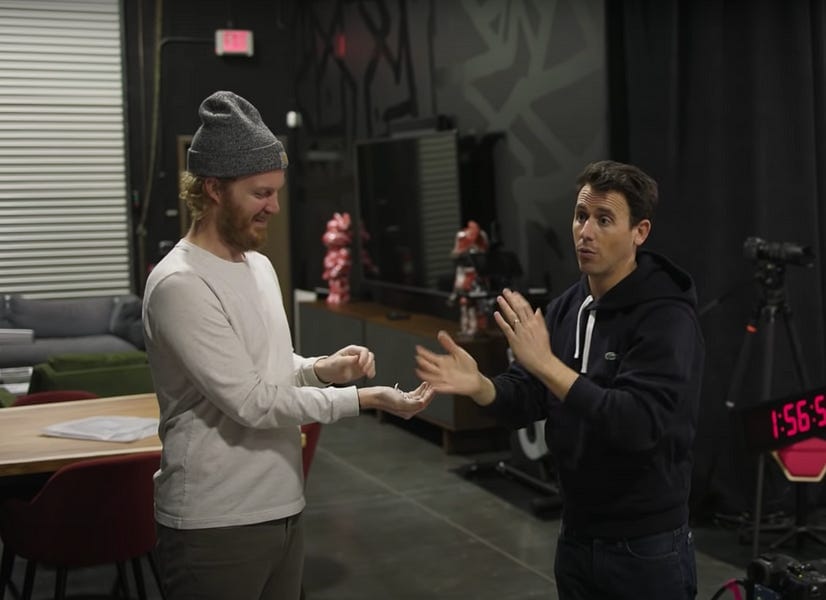Worth Watching: This New Oz Pearlman Video
He's been breaking records and reading minds

Oz Pearlman set a new record this week. The mentalist ran around New York’s Central Park a staggering 19 times in one day. If you have never visited Central Park, you should know 19 laps is 116 miles. One typical marathon is 26 miles. Oz Pearlam is out of his mind.
Oz did get some great press, connected with lovely humans, and raised a stupid amount of money for Ukraine charities. I watched his well packaged YouTube video about the successful record attempt. Then I was recommended the very new video below, published on another channel, that features Oz performing mentalism impromptu and up-close. It’s worth a watch.
When reading about Oz’s new record and watching the above video, they both raised important questions for me. Like, how old is Oz Pearlman? I swear he was on the front page of Penguin Magic Shop’s website back when I was five years old. Go on, have a quick guess. OK, that’s enough time to spend guessing—he’s 39.
Oz was born in Isreal, like many great mentalists, and you’ve likely seen him on America’s Got Talent, plenty of morning news shows in NYC and obviously also on the front page of Penguin Magic.
The video above really caught me off guard. I think I, and perhaps a collective we, have become so used to seeing mentalism performed on big stages and TV shows. With props, plenty of work before the performance and an overriding sense that the entire thing is overly produced.
This video feels raw, impromptu, and genuine—likely, because it is. And unlike a lot of “impromptu” magic, I get a sense that Oz really is improvising. There’s a playful sense and momentum you don’t get when you see a magician performing the sixth phase of their pre-prepared twelve-phase card routine.
Oz must bounce off of the people around him, create a real human connection, and decide how to act and occasionally recover in each moment.
Magic has remained known for close-up and impromptu performances ever since David Blaine and Paul Zenon first pushed it out of the TV studios and onto the streets. Channel 4 essentially pitched Derren Brown’s first series as being exactly what Blaine was doing in America, but on UK streets and with mind reading instead of magic.
Why didn’t that catch on? Why did Derren’s TV specials get bigger and bigger as Blaine’s became more and more refined? I have a feeling I know the answer.
I admire mentalism, for a number of reasons. Writing with mentalists for television has always been exciting. I’d say most mentalists I’ve collaborated with are good decision-makers with a clear understanding of what they should perform and why.
As I write this post, I realise that all of my reasons for admiring pure mentalism (no magic) stem from the fact that it is not visual. And that’s odd because the fact that mentalism is non-visual is why I’m not always so keen on it. So, what’s up with this? Why should magicians pay more attention to mentalists? How can magic and mentalism better collide? Let’s unpack the secrets behind pure mentalism, starting with…
There’s nowhere to hide.
A lot of mentalism is just linear methods and lots and lots of bluff. There are no distractions, no flashes of flame, visual changes, vanishes or levitations. Sure, you can combine all of these with mentalism if you are so inclined, but Oz, for example, is not so inclined.
In most magicians’ acts, these big visual moments can drive focus and distract from less critical things like methods. With no visual moments, you can get forced to focus on elements magicians often overlook—like presentation, storytelling and human connection. You need to think more carefully about planning your methods and how an audience will recollect your performance.
